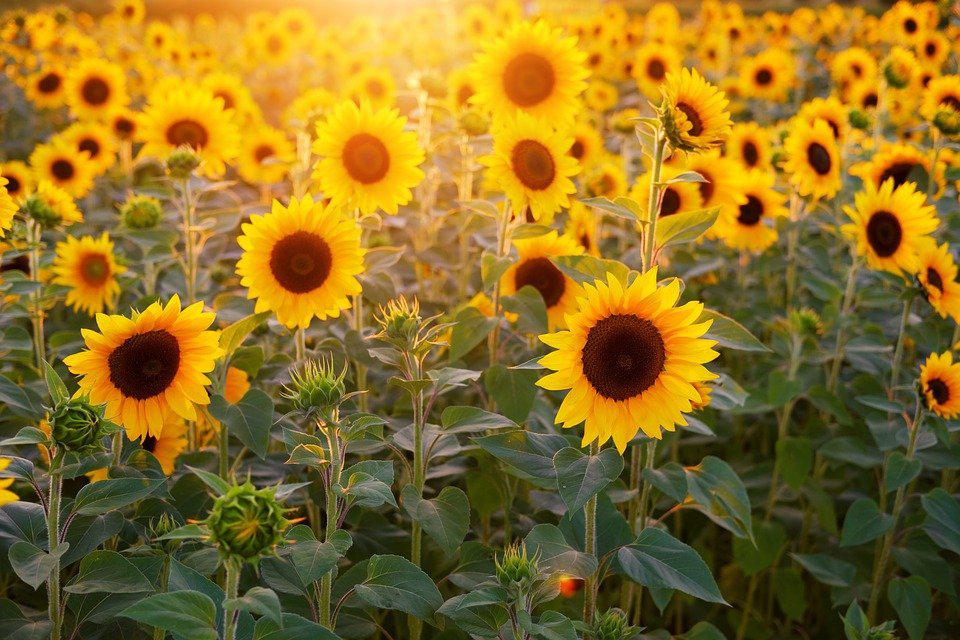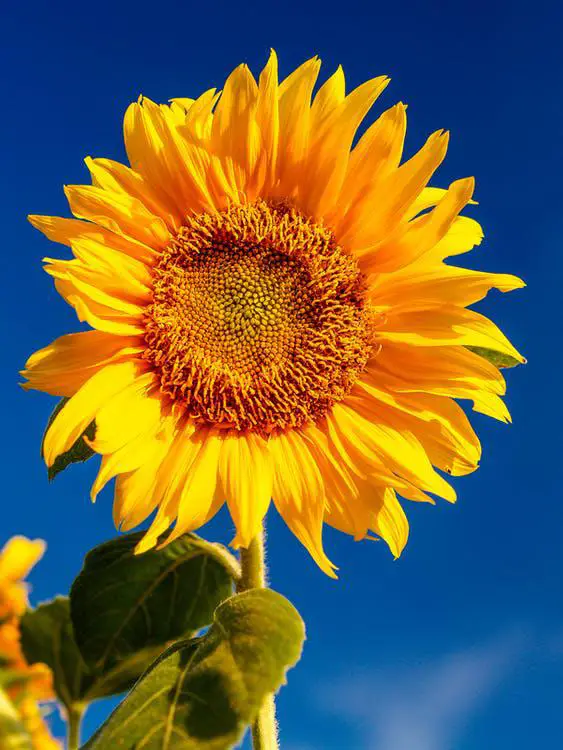
Have you ever observed a flower closely? Did you ever know that mathematics hold the key to the nature too? How much ever intriguing it may be, the fact is that flowers are a lot more than just pretty structures. They depict the true art of nature and are created using their own secret formula – a magic sequence – that defines the pattern in which their petals are uniquely organized.
Known as the Fibonacci sequence or Fibonacci numbers, the seeds, petals, pistils, leaves and its veins are all formed using a distinct mathematical formula. In this formula, a definite mathematical sequence is created by adding the two preceding numbers together. The sequence starts with 1 1 2 3 5 8 13 21, and goes on forever and ends up in infinity.
What are Fibonacci Numbers?
Fibonacci numbers are a never-ending sequence of numbers that start with 0 and 1, and goes on forever by adding the previous two numbers. It was discovered by an Italian mathematician, Leonardo of Pisa, better known as Fibonacci, in the 13th century. The sequence mostly occurs in most of the biological structures and forms of life. For example, rose, lilies, daisies, buttercups, and rose are all Fibonacci flowers. The spirals of the pinecone equal Fibonacci numbers. The petals of flowers are arranged in Fibonacci sequence. The seeds of sunflower follow a Fibonacci pattern. The combs of honeybees usually sum up to a Fibonacci number. Snail shells are Fibonacci in pattern. Galaxies and hurricanes are spiral in nature. In fact, our bodies too are consistent with Fibonacci numbers.
All ratios of Fibonacci numbers are closely related to the Golden ratio. In fact, the higher the Fibonacci number, the closer is its relationship is to the golden ratio (the number of phi) – 1.618.
It all Started With a Pair of Rabbits
The Fibonacci sequence was born out of a simple, hypothetical puzzle about rabbit population:
A man asked, “If two rabbits were put in a fenced yard, how many pairs of rabbits will they produce in a year?
Rabbits can’t reproduce until they are one month old. So in the first month, the same pair remains. In the second month, the female gives birth to a pair of rabbits. In the third month, the original pair produces another pair of newborn, while their offspring grow to adulthood. This pattern continues and follows 1, 1, 2, 3, 5, 8, 13, 21, 34, 55, 89, 144 sequence which goes onto infinity.
While initially, Fibonacci’s experiment looked like a hypothetical situation, the sequence eventually appeared in almost all forms of life, including human beings and has been keeping the scientists fascinated for centuries.
Why Nature Loves Maths?
We all strive to become the most efficient versions of ourselves. It’s the basic law of nature and holds good for flowers and plants too. The Fibonacci pattern has been adopted by flowers and plants to ensure maximum efficiency, optimal utilization of the available space, and maximum availability of sunlight to all parts and structures. For example, take a close look at the sunflower’s head. The Fibonacci pattern allows the flower to make an optimal use of space by ensuring the growth of maximum number of seeds on the seed head. As the seeds grow, the center of the seed head quickly adds new seeds. it does this by pushing the previous ones, or the mature seeds, towards the periphery, so that growth of the flower never ceases to exist.
Examples of Fibonacci Flowers
Flowers are indeed a beautiful and mesmerizing. They are also the perfect examples of the Fibonacci sequence. From pistils to petals and from leaves to the stems, every part of the flower follows a unique Fibonacci number to produce an intricate design. So come, let’s take a look at some of the flowers that exhibit Fibonacci sequence in its true sense:
Sunflower – A classic example of Fibonacci Flowers
Sunflowers are most loved by mathematical biologists as this big, beautiful flower shows the Fibonacci pattern in the most classical way. In sunflowers, the spirals in the center follow the Fibonacci sequence 1, 2, 3, 5, 8, 13, 21, 34, 55, 89, 144… In fact, there are two series of curves that wind in opposite directions, with seeds positioned at a certain angle from each other to create a beautiful spiral. These spirals pack sunflower florets as tightly as possible to maximize their ability to capture sunlight for the plant.

If you are wondering how do Fibonacci flowers create such perfect floret arrangements, then the answer lies in the plant hormone called auxin. The growth hormone, auxin, helps in the growth and development of leaves, flowers, stem, and other plant parts. The plant grown where the auxin flows and interacts with other proteins. And since the hormone flows in the plant in a spiral direction, the plant grows spirally, leading to “Fibonacci spirals” in sunflowers.
The Benefits of Fibonacci Spirals
The Fibonacci pattern allows sunflowers to pack a large amount of seeds in their heads. As the individual seed grows, the head pushes the seeds toward the periphery to make room for new seeds. Thus, by following a Fibonacci pattern, sunflowers ensure that their seed growth can continue indefinitely.
Rose – Another Beautiful Example of Fibonacci Flowers
The Rose flower too follows the ‘golden ratio of phi’. It means that rose petals are arranged in a Fibonacci spiral. In rose, petal number one and six grow on the same vertical imaginary line, forming a set. The new set grows in the spaces between the previous set, creating a spiral arrangement of petals that follow the Fibonacci series. Each new petal is the sum of the last two numbers. And if you try to derive the mathematical relationship between any two adjacent rose petals, it will always come out as Phi or 1.618. The efficient petal arrangement in rose ensures that the light from the sun gets evenly distributed to all parts of the plants.
Best Way to Study the Fibonacci Pattern in Rose
Want to understand the Fibonacci Pattern in Rose? Here’s the simplest way to do it:
- Take a rose flower and cut its stem vertically into four equal parts.
- Now transfer each part into a different bowl/glass with colored water.
- The rose petals will take up the dye depending on their position in the spiral and you’ll get to see a rainbow rose.
Flower Pistils Too Follow the Fibonacci Sequence
Just like petals, the middle part of the flower, known as pistil, too follows the Fibonacci sequence. In fact, pistils follow Fibonacci sequence in a much more intense way. The curvy pattern they form using Fibonacci sequence creates a beautiful and intricate design that truly looks like an incredible piece of art.
Fibonacci Sequence in Leaves
Leaves of flowers, cacti and other succulents too follow the Fibonacci sequence and are arranged in both left-handed and right-handed spirals. The veins in the leaves too follow Fibonacci and branch out more and more in the outward direction. Their alignment too is in a pattern that depicts two Fibonacci numbers. For example, start from any leaf. After a certain turn (1, 2, 3, 4 or 5) of the spiral, there’s a leaf that will be aligned in the direction of the first leaf, and the pattern continues.
Pinecones Follow the Fibonacci Sequence Too
Have you ever closely observed a pinecone and imagined why it looks like this? Well, the seeds on the pinecone too are arranged in the spiral pattern. Each cone consists of a pair of spirals, radiating upwards in the opposite direction. The pattern can be easily understood if count the right and the left spirals separately. We usually get two adjacent numbers in the Fibonacci sequence. They are either 5 and 8 or 8 and 13.
Other Examples of Fibonacci flowers
There a lot of other examples of Fibonacci flowers. These include, but are not limited to:
- Lilies and Iris, which have 3 petals each
- Buttercups, wild rose, columbine, and larkspur has 5 petals each
- Daisies follow a beautiful Fibonacci sequence of 21, 34, 55 and 89 petals
- Marigold shows a beautiful Fibonacci arrangement of 13 petals
- Delphiniums have 8 petals
- Plantain and pytethrum are arranged in 34 Petals each
- The Black-eyed Susan and asters have 21 petals
Amazing, isn’t it? So, have you ever observed the Fibonacci sequence in life around you? From flowers to animals and from human bodies to the sea life, it exists everywhere and probably in all forms of life. This shows that we all follow a uniquely identical pattern of growth and that there’s a strong correlation between maths and reality.
So, next time you grab a bouquet of flowers, appreciate them for not just being pretty and beautiful. Take a closer look, and you’ll find a series of Fibonacci patterns radiating in different directions – an unimaginable miracle of science and nature.
